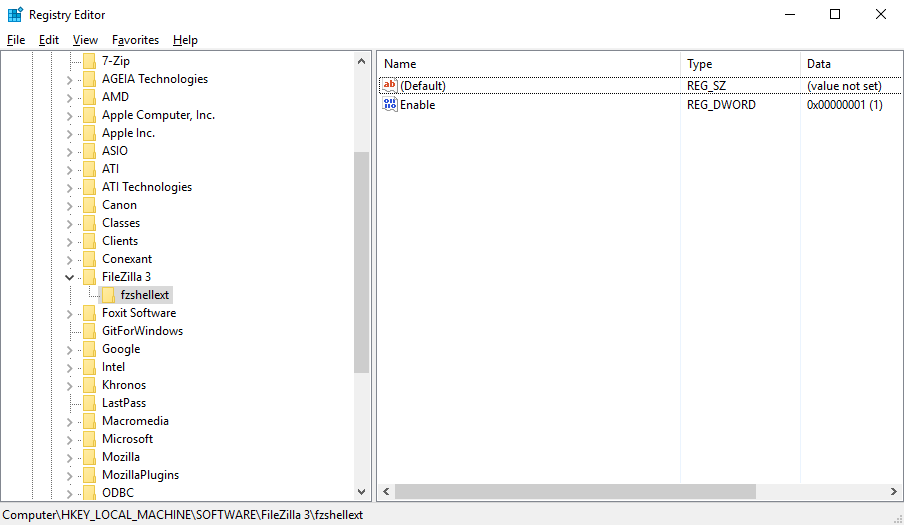Registry Key For Windows Update
In Part 1 of this article series, I explained that although Windows Update is self configuring for the most part, there are a large number of registry keys that you can use to tweak Windows Update’s behavior. If you're creating a new registry key, right-click or tap-and-hold on the key it should exist under and choose New - Key. Name the new registry key and then press Enter. If you're creating a new registry value, right-click or tap-and-hold on the key it should exist within. One way is to enumerate the keys on HKEYLOCALMACHINE SOFTWARE Microsoft Windows CurrentVersion Component Based Servicing Packages and then check the (string) value InstallClient for the 'WindowsUpdateAgent'. You can apparently use the Windows Update Agent API to read it independent of the registry location. This step-by-step article describes how to add, modify, or delete registry subkeys and values by using a Registration Entries (.reg) file. Regedit.exe uses.reg files to import and export registry subkeys and values. You can use these.reg files to remotely distribute registry changes to several Windows-based computers. For example, suppose you want to enumerate all the values in a registry key. This command looks like it should work: Get-ChildItem 'hklm: software microsoft windows currentversion uninstall windows media player' There are many different ways to examine registry entries. The simplest way is to get the property names associated with a key. Mar 04, 2015 I have an issue, I didn't see any critcal and security update need to be approved in wsus server But i ran MBSA on some server, it was missing 10 patches Not sure why? What is the registry key settings on wsus server itself: HKLMsoftwarepolicieswindowsWindwosUpdate Hi, What are these updates applied to? Have you select the corresponding product.
In Windows Server 2016 there are no GUI options available to change the update behavior.
In this blog I was outline the different ways to change the Windows Server 2016 Update settings.
Windows Server 2016 Update settings
May 08, 2014 DisableWindowsUpdateAccess RegDWORD 1 = Disables access to Windows Update. 0 = Enables access to Windows Update WUServer RegSZ HTTP(S) URL of the WSUS server that is used by Automatic Updates and API callers (by default). This policy is paired with WUStatusServer, and both keys must be set to the.
Windows always looks at registry keys located in the following hive:
HKEY_LOCAL_MACHINESOFTWAREPoliciesMicrosoftWindowsWindowsUpdateAU
Typically there is a key named ‘AUOptions’ with a value in the range 2-5, and have the following meaning:
– 2 = Notify before download.
– 3 = Automatically download and notify of installation.
– 4 = Automatically download and schedule installation. Only valid if values exist for ScheduledInstallDay and ScheduledInstallTime.
– 5 = Automatic Updates is required and users can configure it.
But if there is a ‘NoAutoUpdate’ key with the value of ‘1’, no updates will be processed by Windows.
Powershell
You can change the registry key with the help of Powershell directly:
In Windows Server 2012 I used to change the setting using the .NET object as below, this doesnt work anymore in 2016 as the API only allows “GET” statements.
$WUSettings.NotificationLevel=3
$WUSettings.save()
SCONFIG
Sconfig is basically a simple batch script, which is sufficient for configuration tasks such as update settings.
In the sconfig prompt you can select options ‘5’ to enter the update settings configuration and then choose:
A – Automatically scan, download and install updates. After installation perform a reboot.
D – Automatically scan, download updates
M – Never check for updates, trigger manually.
Open a command prompt with administrative permissions and run SCONFIG from there.
Group Policy
You can always use the trusted GPO’s in an Active Directory domain environment. The settings are located under ‘Local Computer Policy > Computer Configuration > Administrative Templates > Windows Components > Windows Update’.
You can configure the same range of numbers here.
More info on managing update polices with GPO’s here:
https://technet.microsoft.com/nl-nl/library/cc720539(v=ws.10).aspx
Scheduling Day / Time
When you set the update settings to “Automatically download and schedule installation” it could be that you also want to decide yourself which day/time it should update. This can be done using the ScheduledInstallDay and ScheduledInstallTime keys in the registry.
Registry Key For Windows Update Free
ScheduledInstallDay
| Value | |
| 0 | Install every day |
| 1-7 | Specific day of the week where Sunday =1 and Saturday = 7 |
Avg 2019 activation code. ScheduledInstallTime
| Value | |
| 0-23 | Time of the day in 24-hour format |
Setting the Scheduled Install Day to Tuesday:
Setting the Scheduled Install time to 6 AM:
The changes take effect after logoff
More info on this Windows Update settings here: https://msdn.microsoft.com/en-us/library/dd939844(v=ws.10).aspx
— Psx emulator download windows 10 64 bit.
Registry Key For Windows Update

Thank you for reading my blog.
If you have any questions or feedback, leave a comment or drop me an email.
Darryl van der Peijl
http://www.twitter.com/DarrylvdPeijl